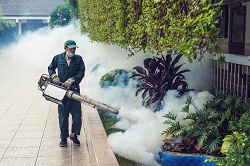Martinican blood donors help shed new light on the Zika virus
‘Refining the picture of Zika fever in adults’ was the core objective of the study published by Blood - a weekly medical journal published by the American Society of Hematology. The study was led by INSERM and partly funded under the ZIKALLIANCE project. From 19 January to 10 June 2016, the team tested 4129 consecutive blood donations and conducted systematic nucleic acid testing for the presence of the Zika virus. The tests allowed the detection of approximately 2% of contaminated blood donations during the outbreak – and their subsequent exclusion to avoid blood-borne transmission. Among these infected samples, the proportion of truly asymptomatic cases of the Zika disease was approximately 45 %, and the proportion of cases that did not require medical attention was 80-85 %. Thanks to follow-up calls made 7 and 14 days after donation and aiming to identify symptoms, the duration of plasma asymptomatic and presymptomatic viremia was also estimated. They found that patients may have significant amounts of virus in their blood whilst having absolutely no symptoms for approximately 6 days. In light of these findings, the team suggests that, nucleic acid testing (NAT) incidence studies in blood donors could improve prevalence estimates in the general population. This is the second study made with contributions from the ZIKALLIANCE project over the past two months. In other joint research supported in part by other grants and which made the headlines in mid-January, the ZIKALLIANCE consortium made the news by revealing that the ability of ZIKA virus to infect glial cells in developing brains was mediated by the Gas6-AXL pathway. They found that Aravive Biologics’ Anti-AXL Candidate could play an antiviral role in addition to its previously reported anticancer activity. ‘This new research suggests that Aravive-S6 may also be able to block infection by ZIKV and some related viruses, such as dengue virus, which share methods of cell entry and infection,’ Ray Tabibiazar, M.D. President and Chief Executive Officer of Aravive Biologics, said at the time. ZIKALLIANCE is a global, EUR 15.5 million project involving 52 partners from 18 countries. Running until September 2019, it has three key objectives: understanding the impact of Zika virus infection during pregnancy and identifying short and medium term effects on newborns; tracking and documenting the natural history of Zika virus infection in humans and their environment in the context of other circulating arboviruses; and building the overall capacity for preparedness research for future epidemic threats in Latin America and the Caribbean in collaboration with the ZIKAction and ZikaPLAN projects. For more information, please see: CORDIS project page
Countries
France



